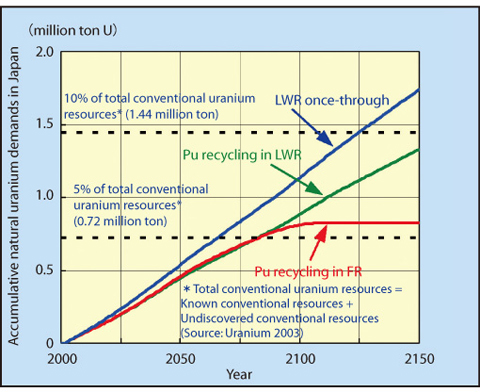
Fig.1-1 Estimated cumulative natural uranium demand in Japan with
the introduction of FRs replacing LWRs starting in 2050
Fig.1-2 Progress & Prospect of the Feasibility Study on Commercialized Fast Reactor Cycle Systems (FS)
Fig.1-3 Sodium-cooled reactor concept image to be developed with a focus on from now
Fig.1-4 Image of the stepwise R&D until approximately 2050
The number of neutrons born from a nuclear fission in the fast reactor (FR) is more than that in the light water reactor (LWR). Uranium-238 in concentration of 70% or more in the nuclear fuel of the fast reactor core captures these neutrons and thus is transmuted to plutonium 239. Therefore, the rate of plutonium 239 generation in the FR is more than in the LWR. The production of plutonium 239 in the FR is more than the consumption of nuclear fuel (breeding of nuclear fuel). So, as shown in Fig.1-1, there is a possibility that there will be no need for import of natural uranium from foreign countries in the 22nd century, if the introduction of FRs replacing LWRs starts in 2050.
At the same time, minor actinides (collective term of three elements: americium, curium and neptunium), which are difficult to transmute in the LWR core, are more fissionable in the FR core which has higher neutron energy. Accordingly, the radioactivity in the high-level radioactive waste after disposal is much less, so we have a possibility of decreasing the environmental burden per unit of generated energy significantly.
Based on the experience of R&D results, such as the developing the prototype fast breeder reactor (FBR), "MONJU" and related fuel cycle, JAEA is conducting the joint study "Feasibility Study on Commercialized Fast Reactor Cycle Systems" (hereinafter, "FS") with electric utilities, the Central Research Institute of Electric Power Industry (CRIEPI) and manufacturers. This study has two objectives, presenting "an appropriate concept of the commercial FBR cycle system" and "the R&D programs for commercialization", toward 2015. As shown in Fig.1-2, the FS phase II final report was compiled in March 2006, and now is being evaluated by the Government. The evaluation results will be finalized by October 2006. We give an outline of FS phase II final report below.
We created various concepts for FR and nuclear fuel cycle, exploiting innovative technologies, and developed the elemental technologies necessary for these systems. Total FR cycle systems were set up with design concepts that can realize the best possible performance of each of the FR and nuclear fuel cycle system design concepts, also considering their technical consistency. Further, they were evaluated for prospective conformity to five development requirements (safety, economic competitiveness, low environmental burden, efficient utilization of nuclear fuel resources and nuclear non-proliferation) and for overall technical feasibility. Then we will select the design concepts on which the main R&D investment will be focused.
We selected the "Combined system of sodium-cooled reactor, advanced aqueous reprocessing and simplified pelletizing fuel fabrication (MOX fuel)"(Fig.1-3 and refer to Topic 1-5) as the concept to be developed mainly from now, because it is judged to have the greatest potential conformity to the development requirements and have the high technical feasibility because it uses the accumulated results of past R&D, and international cooperation in this is possible. "Combined system of sodium-cooled reactor, metal electrorefining reprocessing and injection casting fuel fabrication" (metallic fuel) and "Combined system of helium gas-cooled reactor, advanced aqueous reprocessing and coated particle fuel fabrication (nitride fuel) "are selected as the complementary concepts. We think that their R&D should be conducted with a focus on concerns that are judged as essential for technical feasibility.
Fig.1-4 shows the image of the stages of R&D until ~2050. In ~2015, We will present both an appropriate plan for commercialization of the FR cycle and for the R&D programs leading up to commercialization achieved by R&D of elemental technologies based on current innovative technologies, making decisions on the innovative technologies to be adopted for commercial plants and carrying out a conceptual design study of the entire commercial plant and its optimization.
As it is risky and difficult in introduction of a FR cycle on a commercial basis to immediately aim at the construction and operation of middle or large-scale commercial plants employing many innovative technologies, we think that it is necessary to increase the scale of facilities and components step by step, verifying conformity to the development requirements as well as the feasibility and reliability of the innovative technologies.